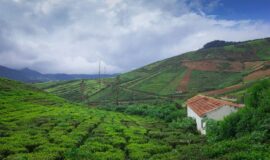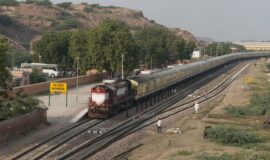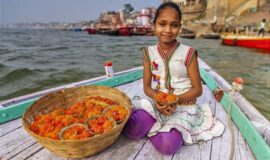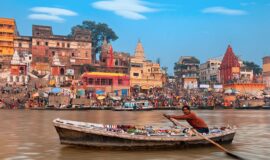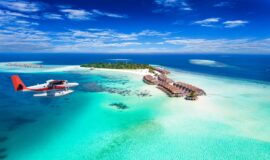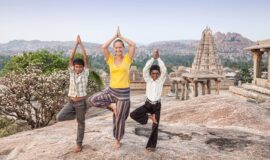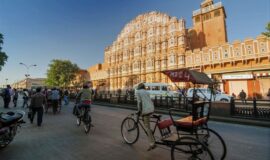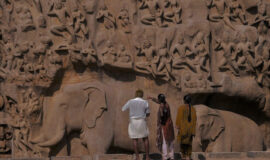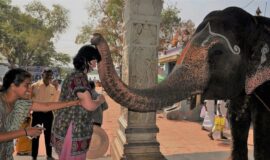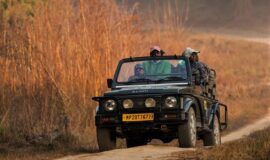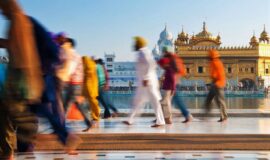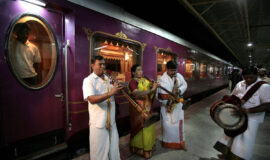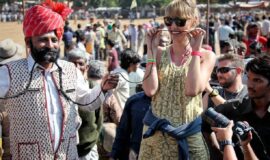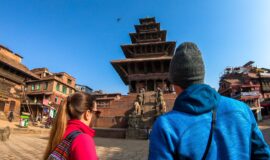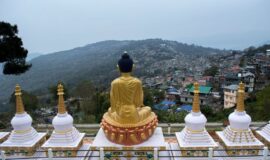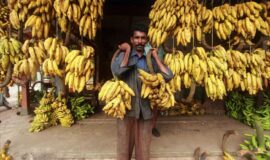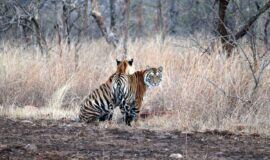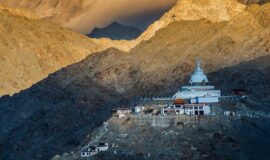Anuradhapura: Sri Lanka
Thuparama Dagoba
Ruwanwelisaya Dagoba
Isurumuniya Monastery
Jetavanaramaya Dagoba
Sri Maha Bodhi Tree
Anuradhapura’s Tanks
Exploring Anuradhapura
Ratna Prasada
Mahasena’s Palace
Abhayagiri Dagoba
Kuttan Pokuna
Samadhi Buddha
Mahapali Refectory
Royal Palace
Thuparama Dagoba
King Devanampiya Tissa constructed Sri Lanka’s very first dagoba during the third century, allegedly to hold the Buddha’s right collarbone relic. Originally built in the form of a simple hemispherical mound, it was reshaped and rebuilt in 1862 into the traditional bell shaped structure. A Vatadage, added during the seventh century, surrounded the temple, although today only the pillars remain.
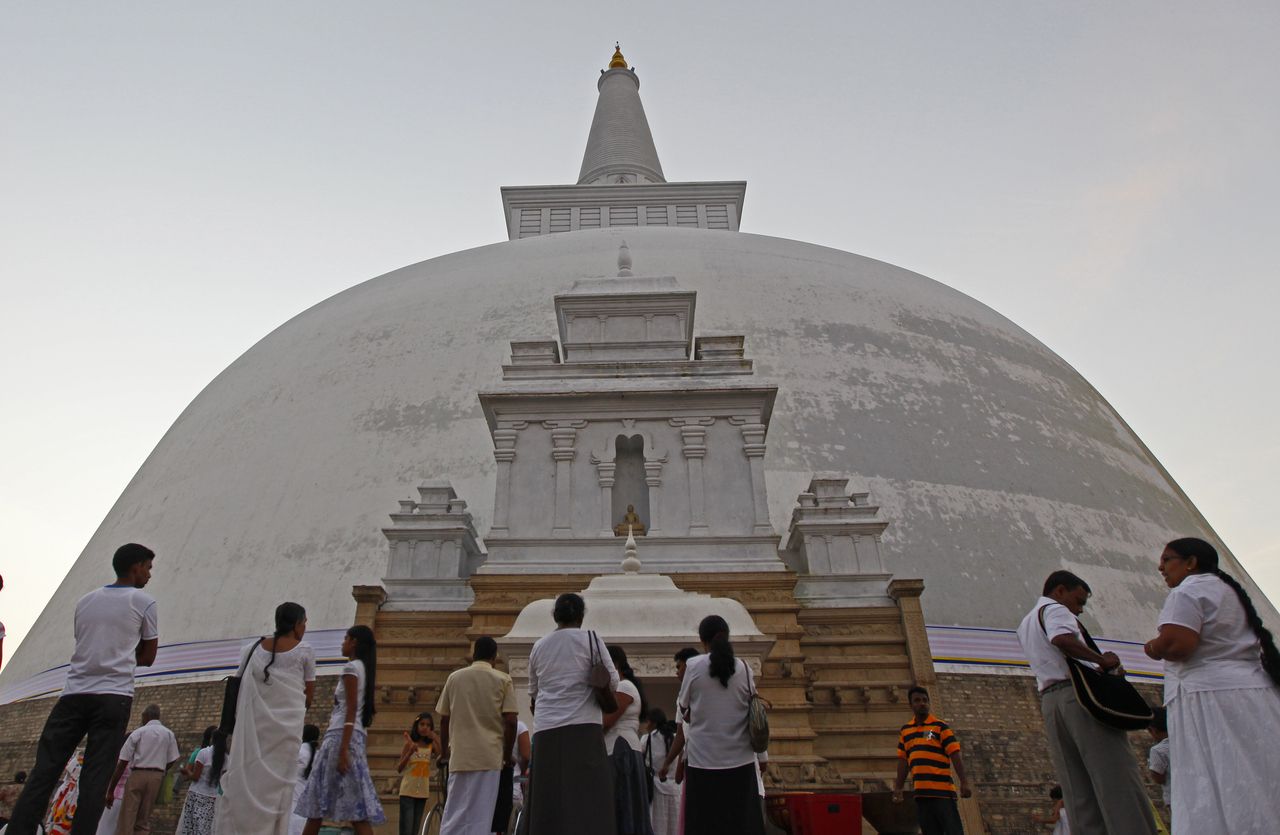
Worshippers enter a shrine in the ancient city of Anuradhapura, Sri Lanka © Ertyo 5
Ruwanwelisaya Dagoba
Construction on the original hemispherical shaped temple started in 200 BC under the rule of King Dutugemunu. Today the renovated white domed dagoba stands more than 295 ft./90 meters tall and is surrounded by a spectacular frieze of no less than 355 elephants standing guard over the stupa.
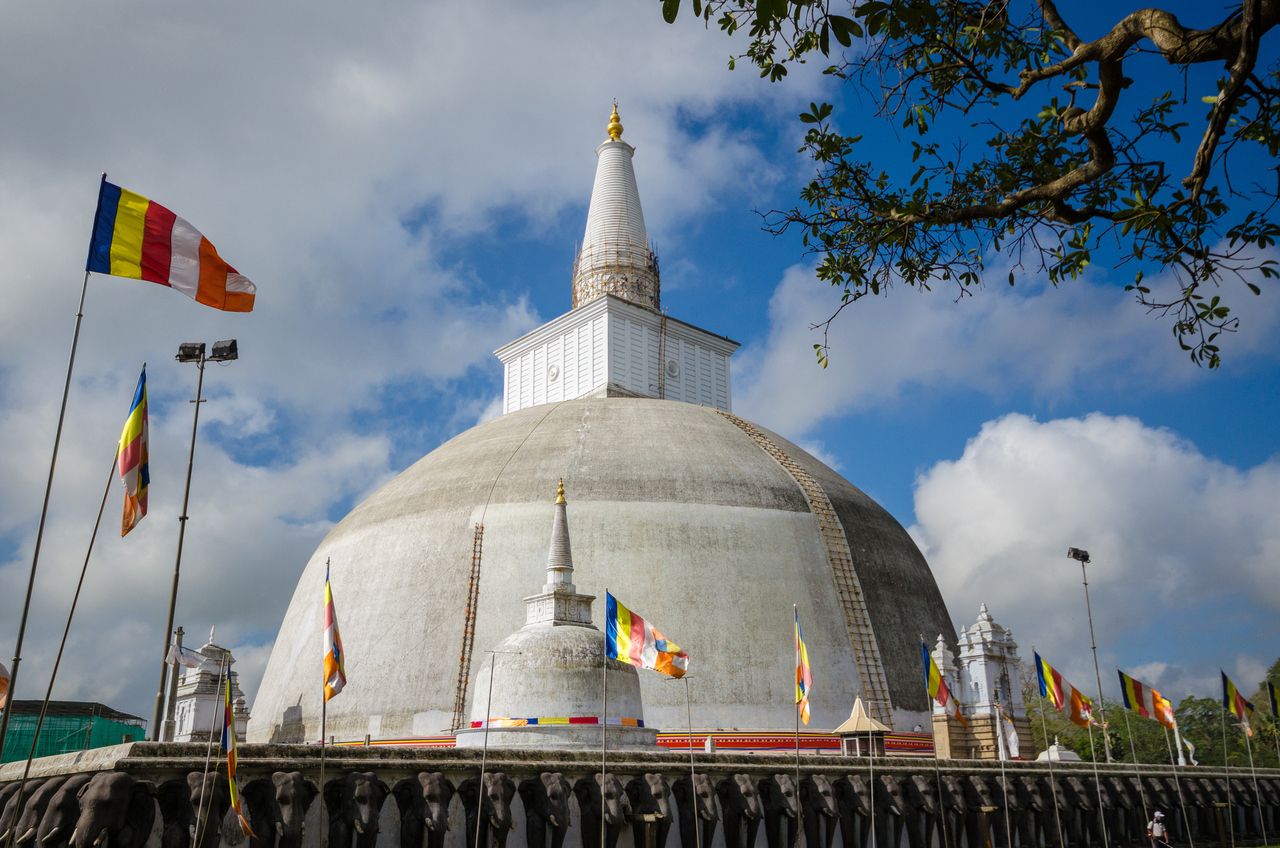
The Ruwanwelisaya Dagoba or Great Stupa is an ancient sacred site in Anuradhapura, dating back to the 2nd century. It is also one of the largest structures in Sri Lanka © Nuwan Liyanage
Isurumuniya Monastery
This rock temple was built by King Devanampiya Tissa around 300 BC and is famous for its stone carvings, of which The Isurumuni Lovers is the most renowned. Other carvings are the Horseman, Elephant Pond and the Royal Family. Inside the shrine a reclining Buddha statue can be viewed.
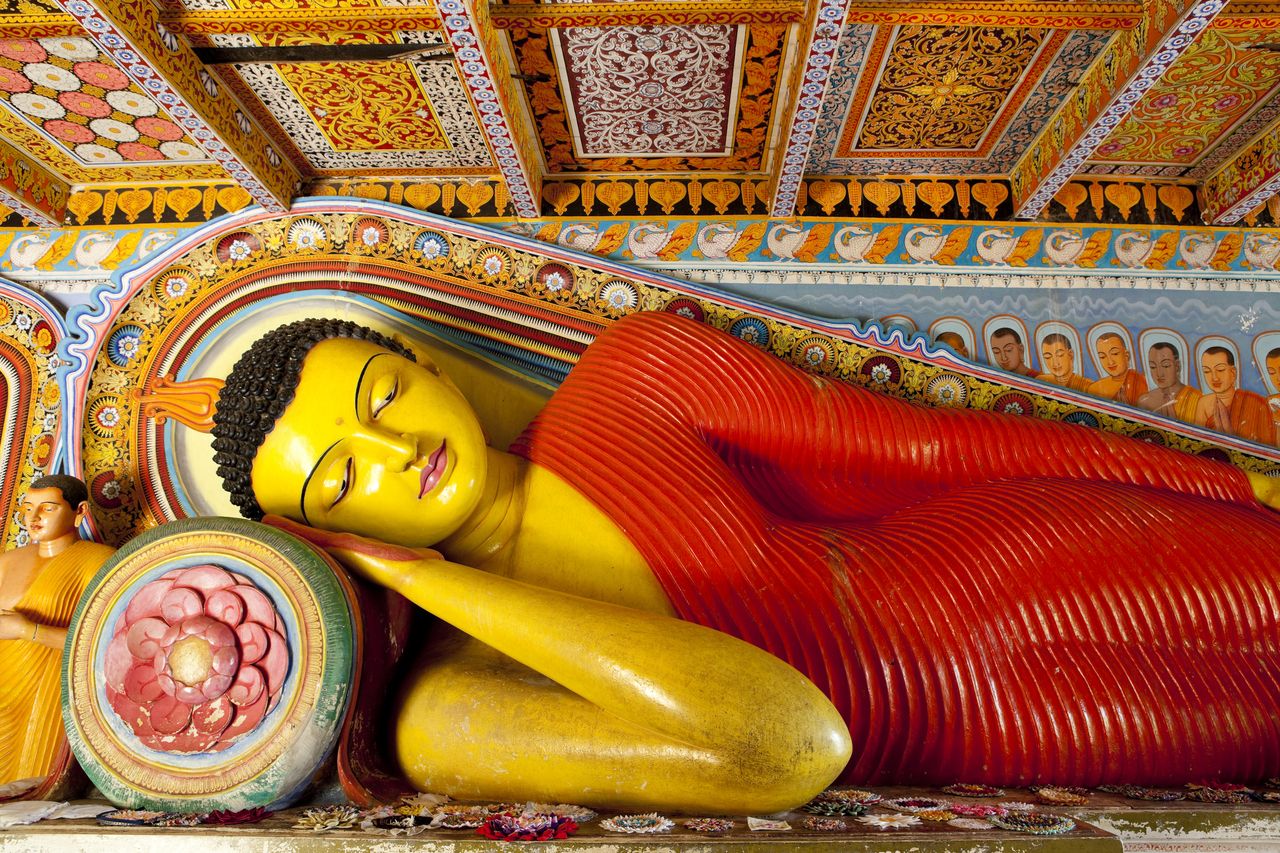
A huge colorful reclining Buddha in the Isurumuniya Temple in Anuradhapura, Sri Lanka © Laughingmango
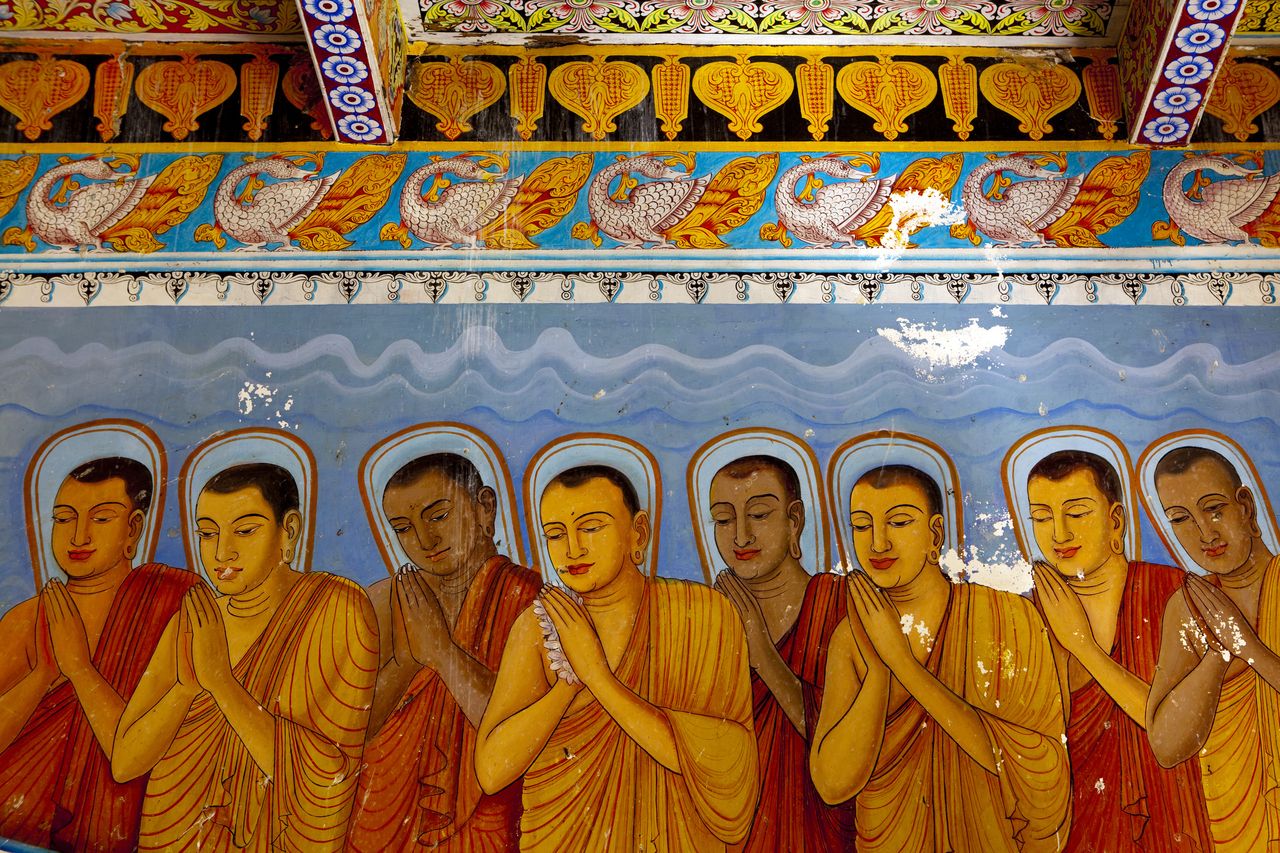
Painted mural in the Isurumuniya Temple in Anuradhapura. Allegedly this was the first temple where the Buddha Tooth Relic was kept before the capital was moved to Polonnaruwa © Laughingmango
Jetavanaramaya Dagoba
After its completion in the third century, this brick stupa, standing 400 ft./122 meters high, was the tallest stupa in the world, and the 3rd tallest building after Egypt’s pyramids. Covered in shrub jungle until 1909, it was finally restored in the 1990’s and artifacts like Buddha statues, carvings and jewelry found at the site can be viewed in the Jetavanaramaya Museum nearby.
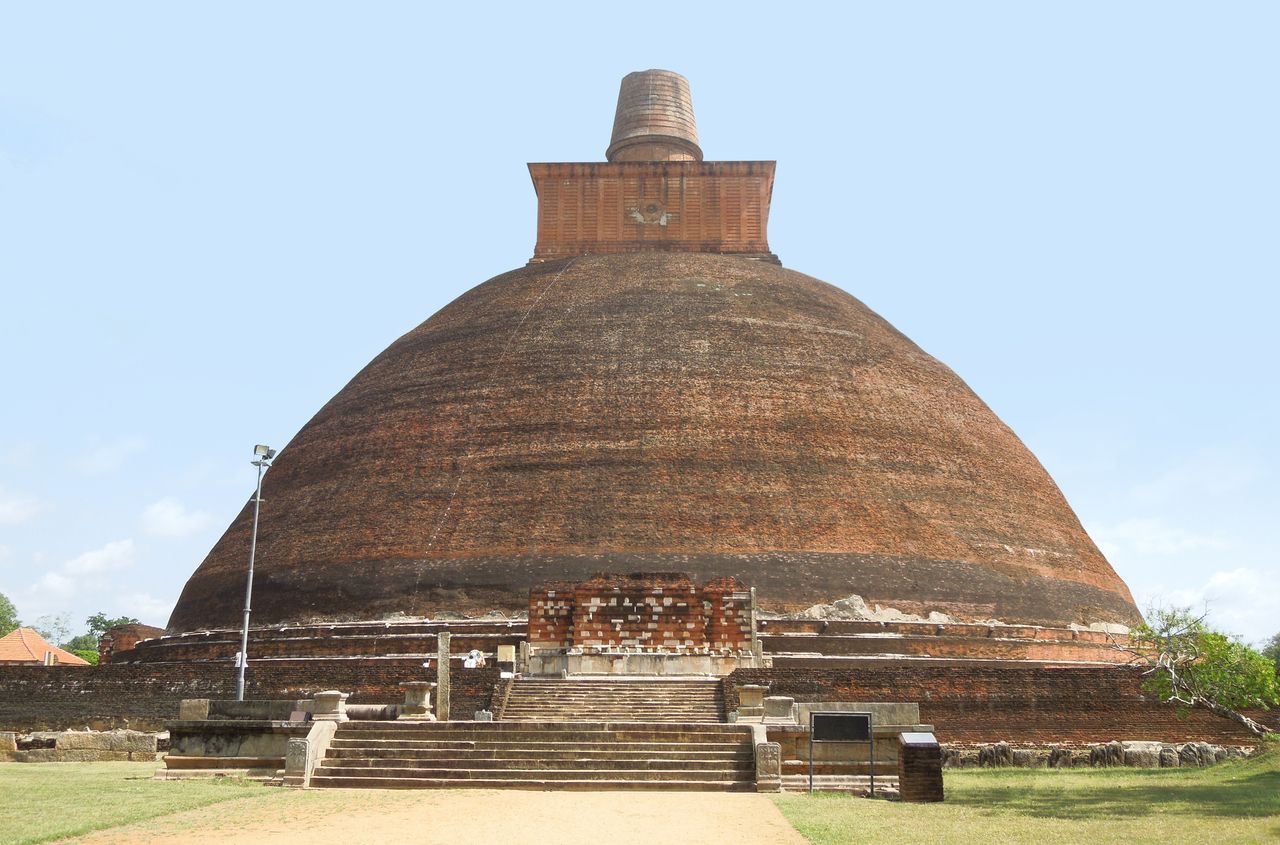
Jetavanaramaya is a reliquary Buddhist monument, situated in the ruins of the Jetavana Monastery in the ancient city of Anuradhapura. The whole city is a World Heritage Site © Prill
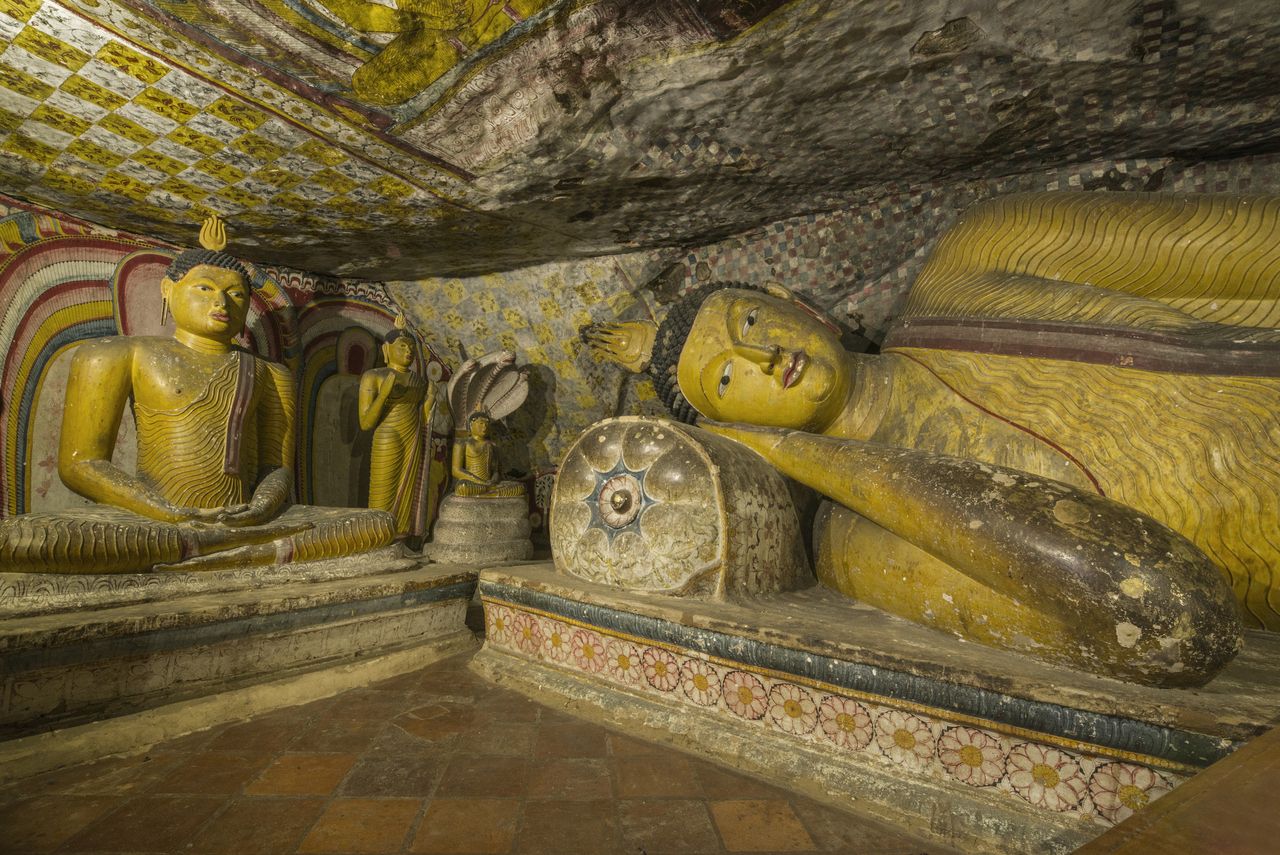
Different sized statues of the Buddha in various positions in a temple in the ancient capital of Anuradhapura © Quickshooting
Sri Maha Bodhi Tree
This sacred tree is the oldest and largest of the numerous fig trees found at Anuradhapura. It grew from a branch of the historical fig tree in India under which the Buddha attained enlightenment, brought to Sri Lanka by the Buddhist nun Sanghamitta Maha Theri. Planted in 288 BC, it is the oldest recorded living tree in the world.
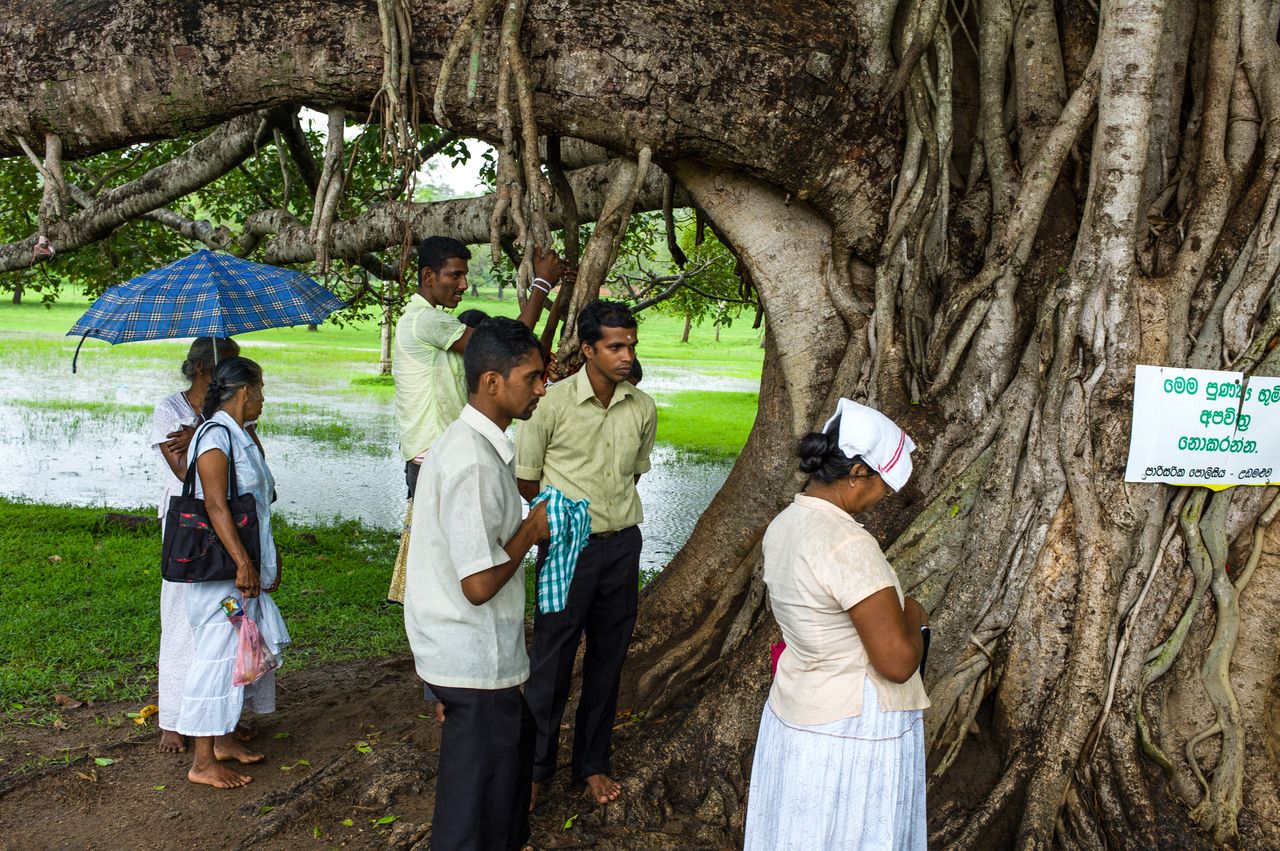
People around a wild fig tree in Anuradhapura, Sri Lanka © Gim 42
Anuradhapura’s Tanks
Three man-made reservoirs surround Anuradhapura of which the largest is Nuwara Wewa, covering an area of 46 square miles/120 square km to the east of the city. Constructed in the first century BC to irrigate the surrounding fields, later kings expanded the tank. The other two tanks are Tissa Wewa to the south (395 acre/160 ha), constructed by King Devanampiya Tissa and the northern 4th century BC Basawakkulama (296 acre/120 ha), the oldest reservoir in Sri Lanka.
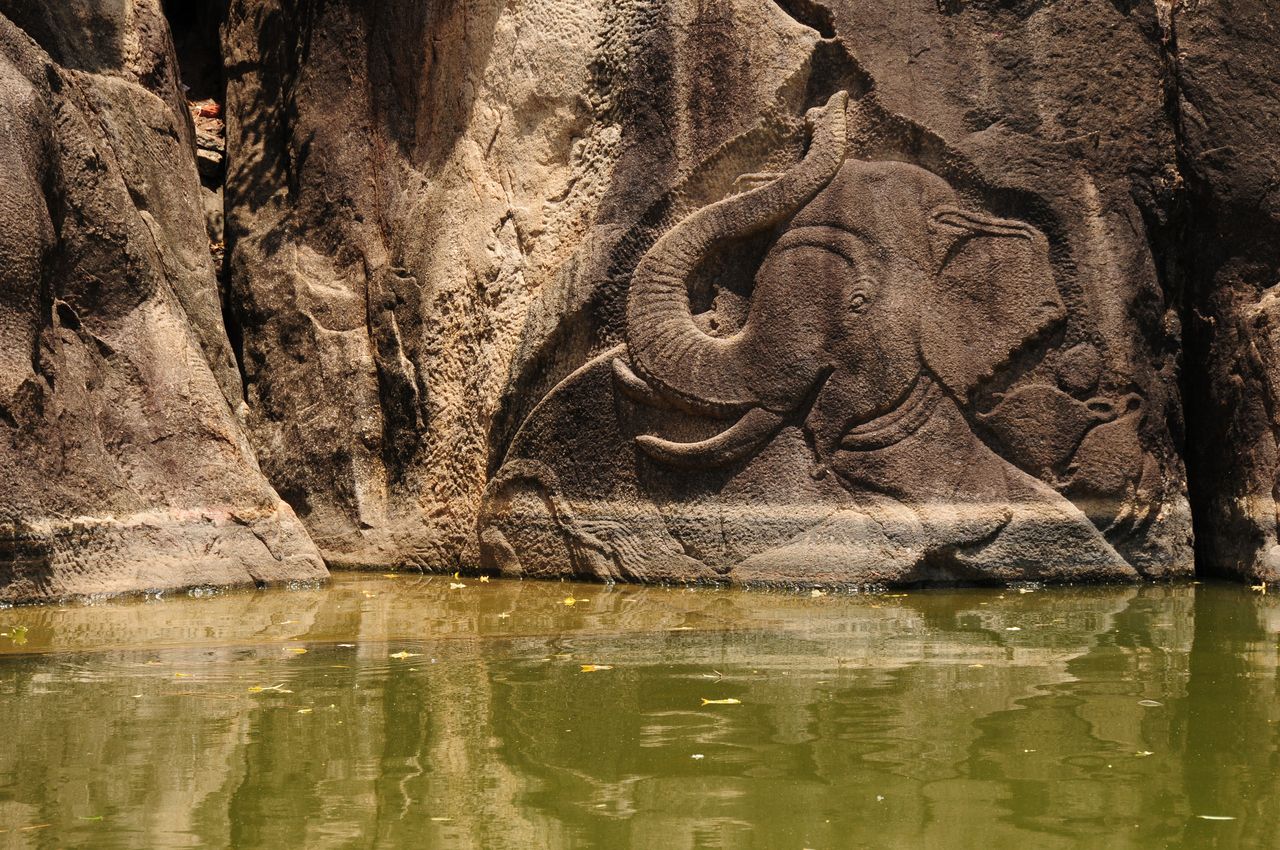
Detail of a carving at the Elephant Pond in Isurumuniya Temple near the Tissa Wewa or Tisa Tank at Anuradhapura, Sri Lanka © Alan_Lagadu
Exploring Anuradhapura
A group of interesting ruins to the north of the ancient city provides a better understanding of the city’s history. The Royal Palace Complex includes the Dalada Maligawa Temple and the Mahapali Refectory where the monastery’s monks received their meals. Further north lies one of the three monasteries in Anuradhapura, namely Abhayagiri, the other being Jetavanarama and Mahavihara. Abhayagiri was constructed around 88 BC and soon became the most influential and largest monastic complex in Sri Lanka with 5000 monks in residence in the fifth century. Also worth a visit are the Kuttan Pokuna Twin Ponds and the marble Samadhi Buddha statue.
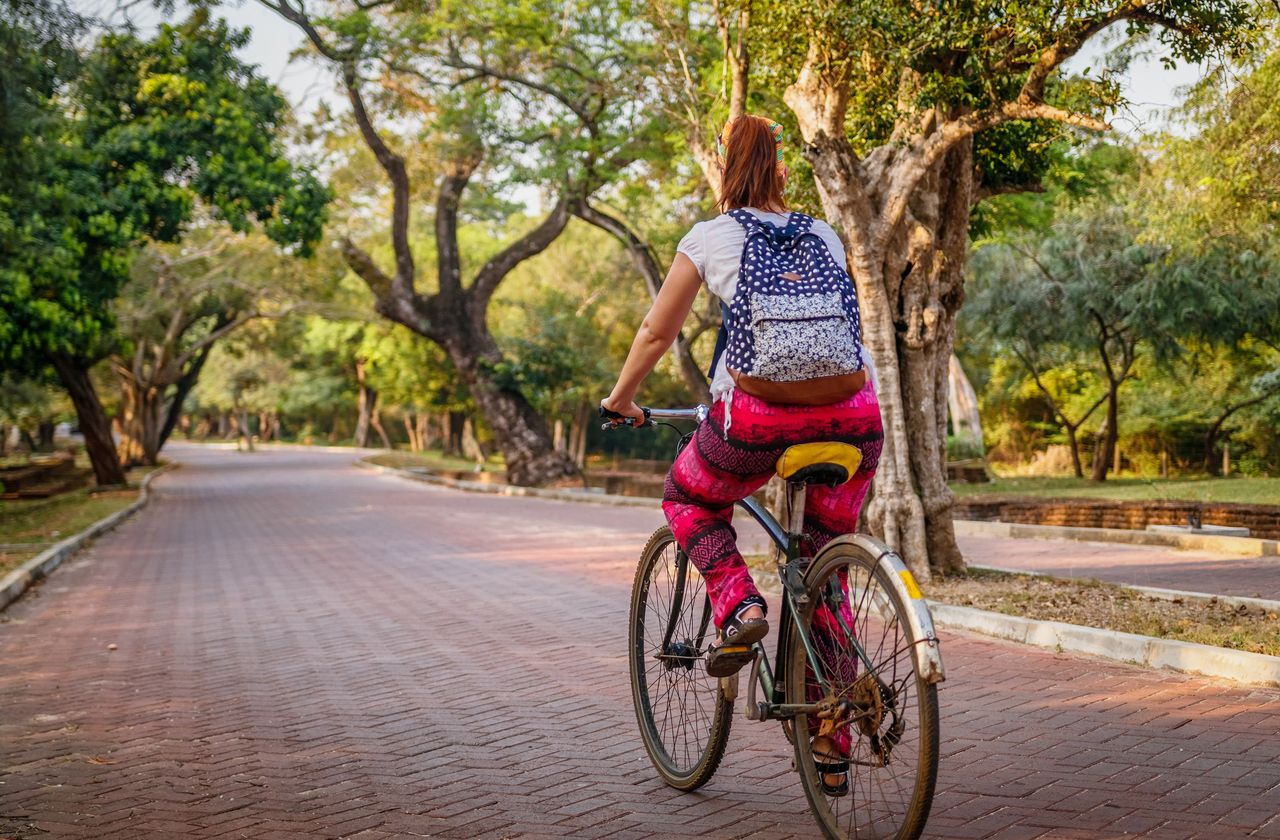
A foreign tourist cycling through the monuments and shrines of ancient Anuradhapura © Milan Chudoba
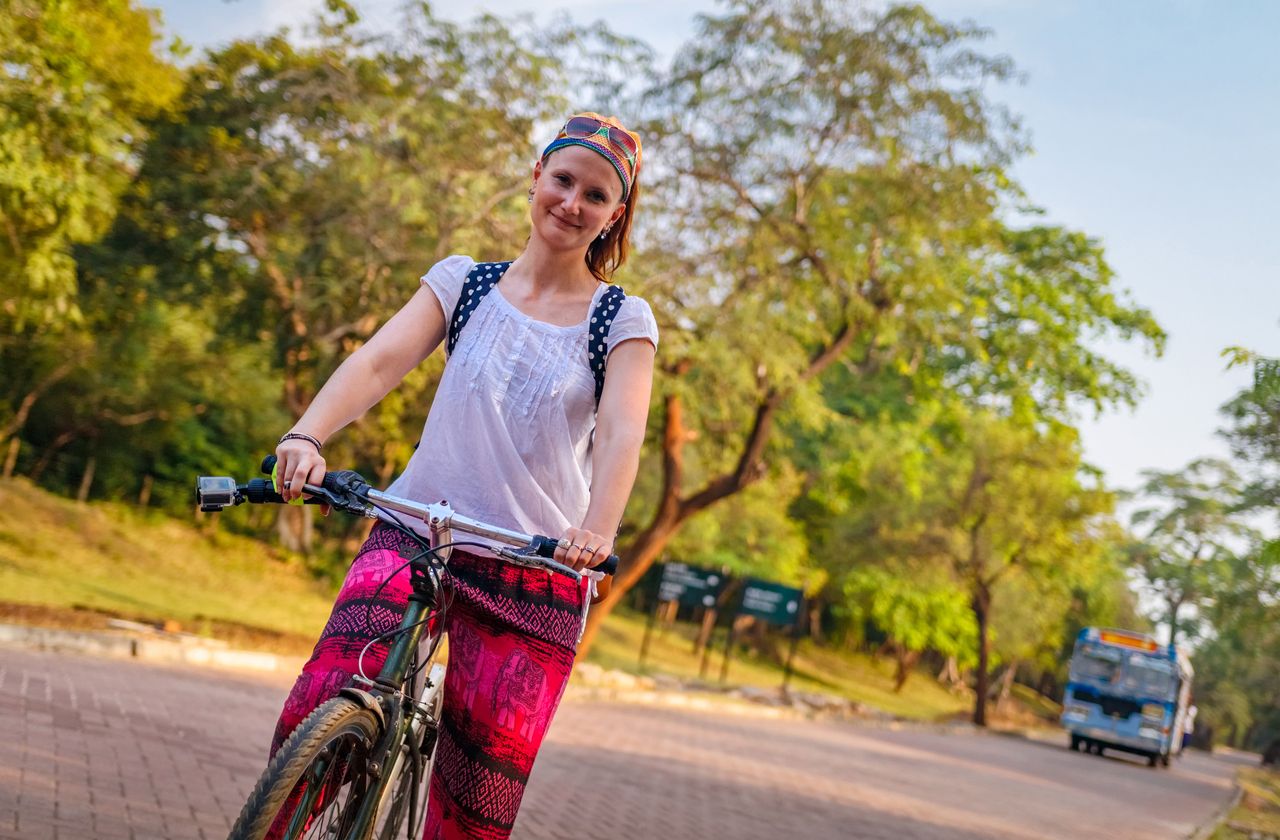
Visitors often choose to cycle through the ancient city of Anuradhapura to visit as many of the historic sites as possible © Milan Chudoba
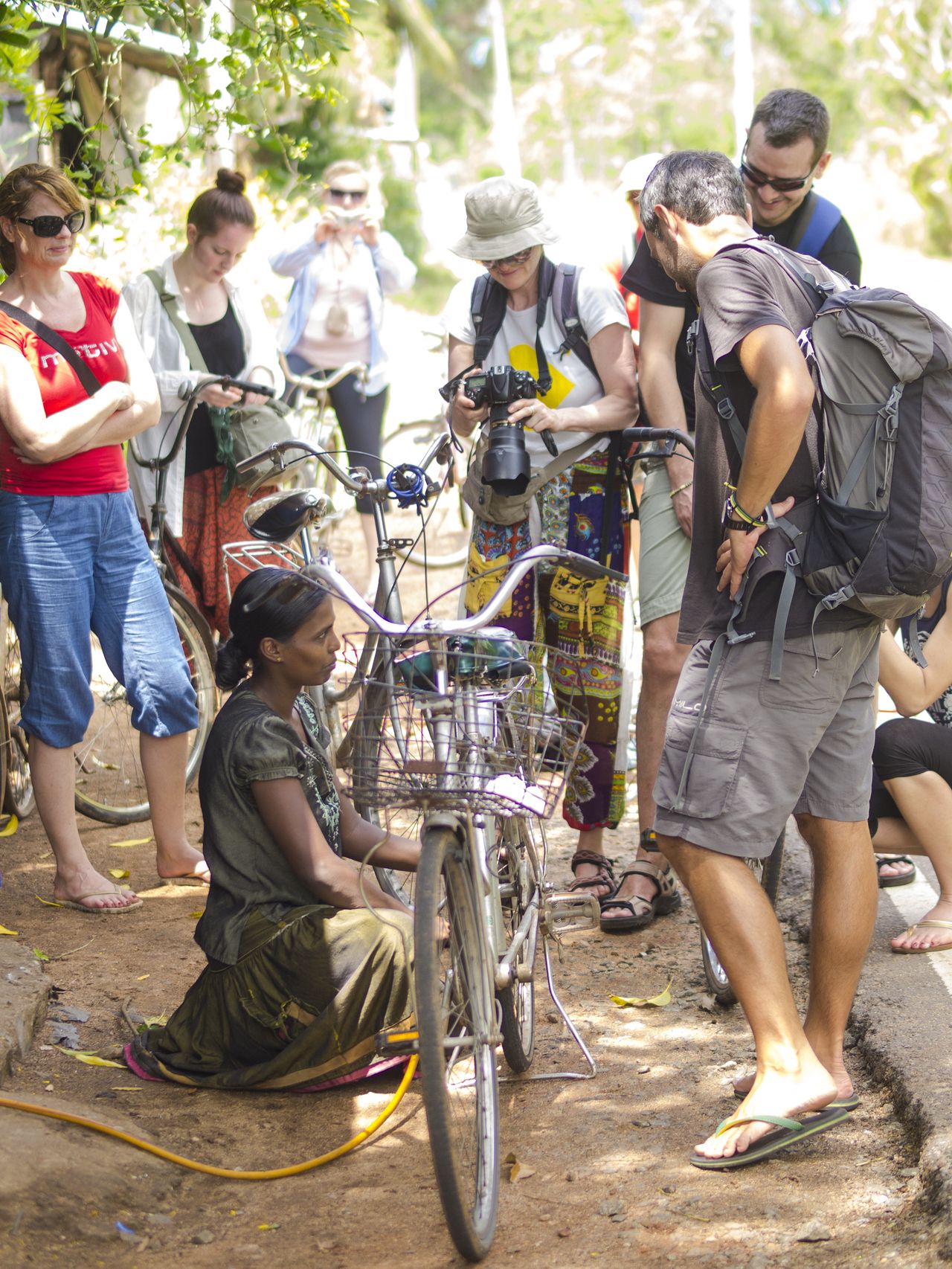
Foreign tourists having a bicycle repaired on the roadside in Anuradhapura. The ancient city is one of the most significant historical sites in Sri Lanka © DavorLovinic
Ratna Prasada
This eighth century monastery lies on the outer limits of the ancient city and here the needy could find sanctuary. Its claim to fame is its well preserved guard stone which shows the Cobra King or Nagaraja underneath a cobra with seven heads.
Mahasena’s Palace
Of this monastery only a few pillars and the base remain but the 8th century moonstone is regarded as the island country’s most exquisite and best preserved. Intricately detailed, the semicircular stone slab has five circles that represent the various stages of the life journey to nirvana.
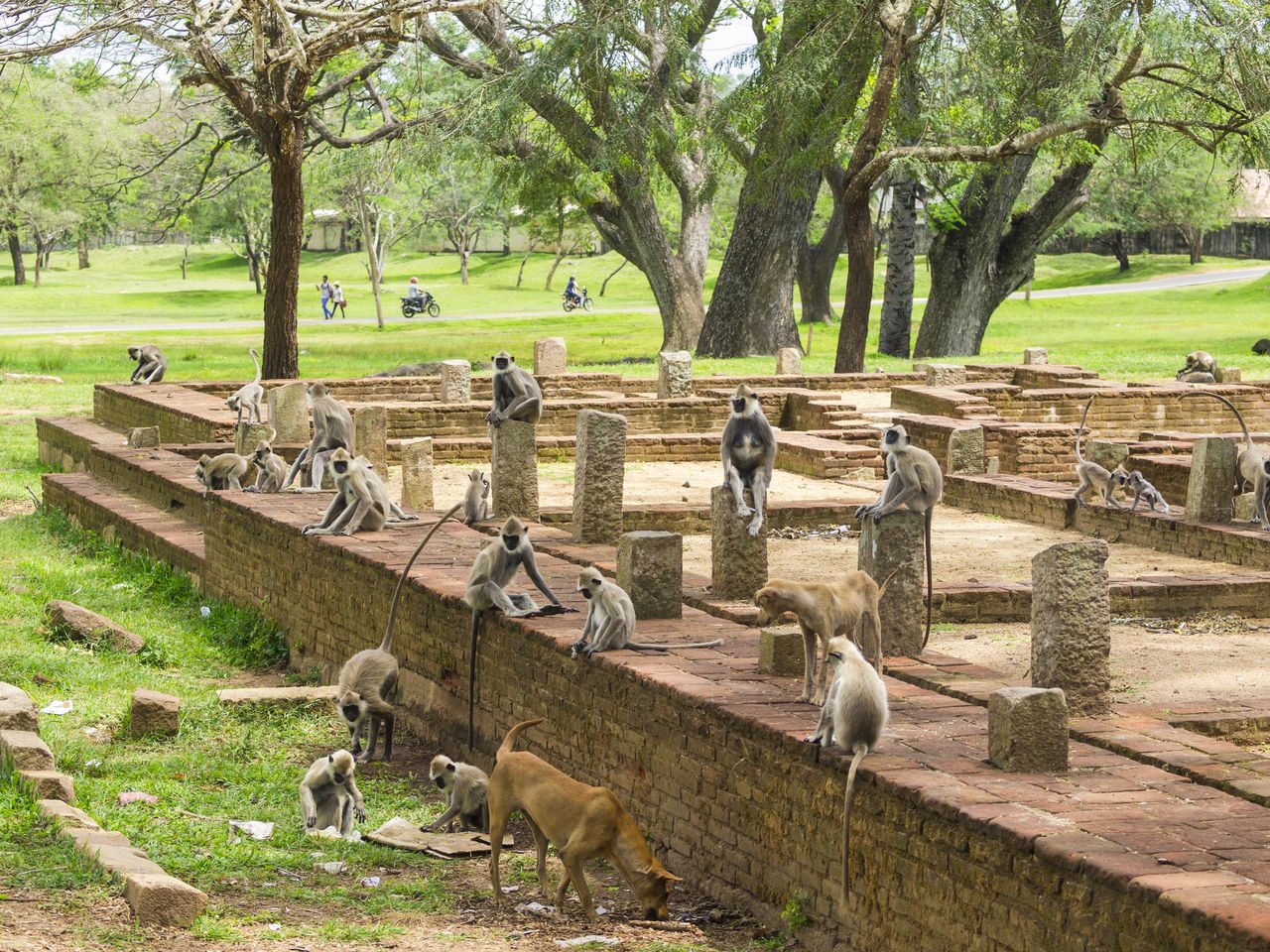
Anuradhapura is a sanctuary for various monkey species. They roam free and are considered sacred animals by Hindus © DavorLovinic
Abhayagiri Dagoba
One of the world’s most extensive ruins, this temple was built by Vattagamini Abhaya in the first century BC and was a massive construction that stood 377 ft./11 m tall until the loss of its spire reduced its height to 230 ft./70 m.
Kuttan Pokuna
Confusedly named the Twin Ponds, this set of pools dating back to the eighth century are of different size with the northern-most one 131 ft./40 m in length and the southern one 92 ft./28 m. Steps on all sides indicate that they were ritual baths for the royals.
Samadhi Buddha
This dolomite marble statue of the meditating Buddha is an excellent example of the high standard of ancient Sinhalese sculpture and goes back to between the 4th and 6th centuries.
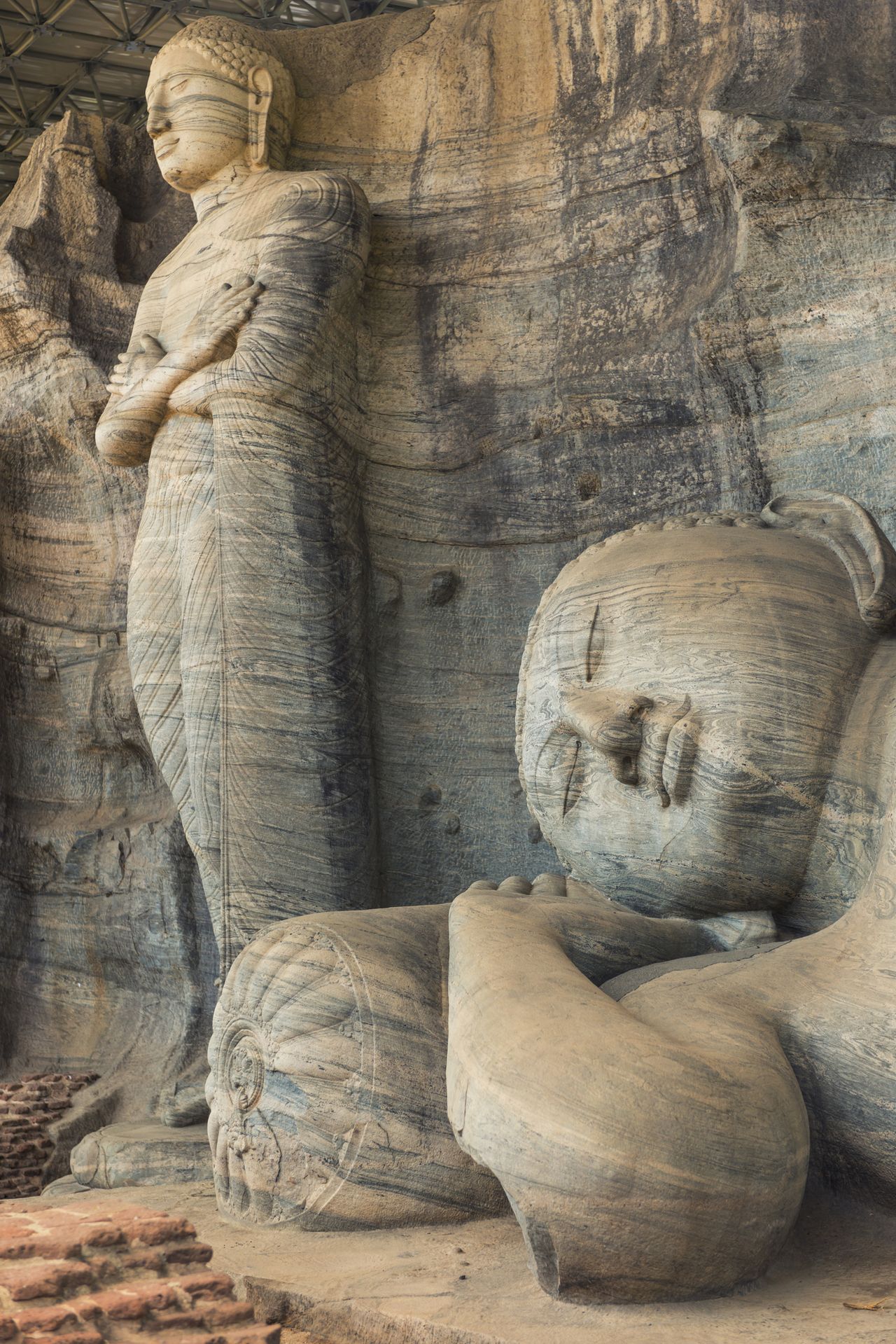
A statue of the reclining Buddha at Gal Vihara in Anuradhapura. It is one of a series of sculptures carved into the large granite rock. These sculptures are considered an excellent example of ancient Sinhalese carvings © Helovi
Mahapali Refectory
The Alms Hall is notable for the huge trough of stone that would be filled up with rice to feed the many monks who resided in the monastery. It forms part of the Royal Palace Complex.
Royal Palace
King Vijayabahu l constructed his palace in 1077 AD after defeating the Chola reign. By this time, he had already moved the capital to Polonnaruwa. Unfortunately, little of the palace remains except for the guard stones and terrace, even though it is not as old as many of the other buildings in Anuradhapura.
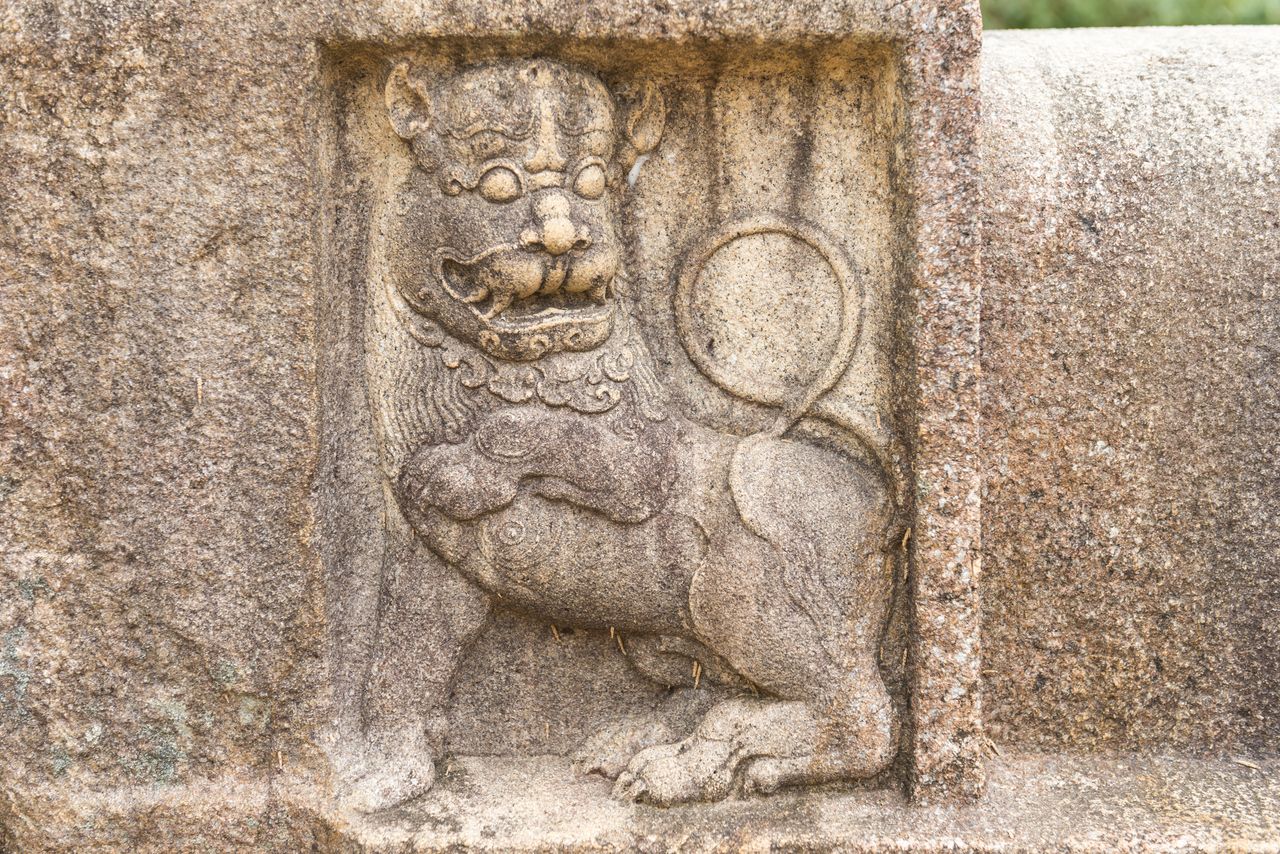
Decorative image of a lion on a wall in the ancient city of Anuradhapura © Halovi
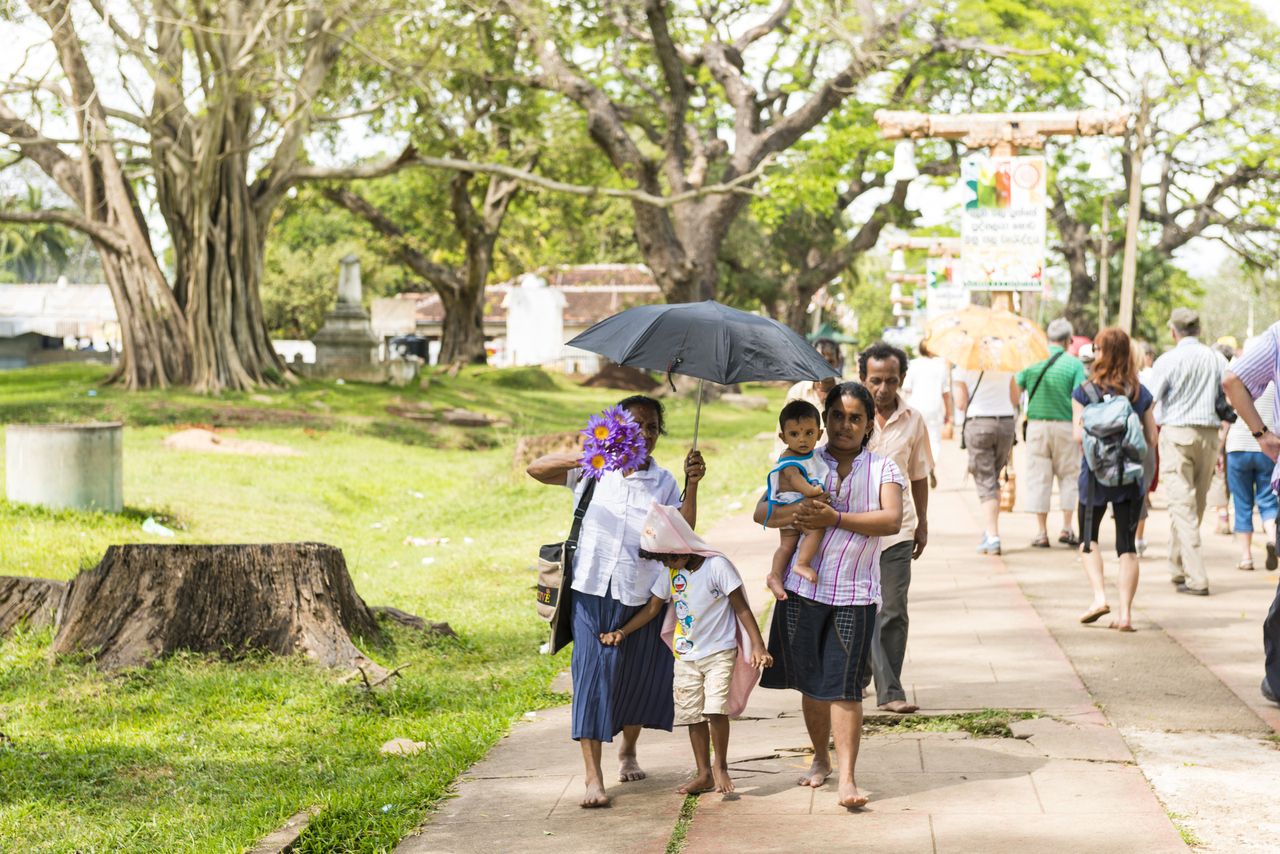
Local people on their way to visit the shrines and buildings in the ancient city of Anuradhapura, Sri Lanka © Helovi
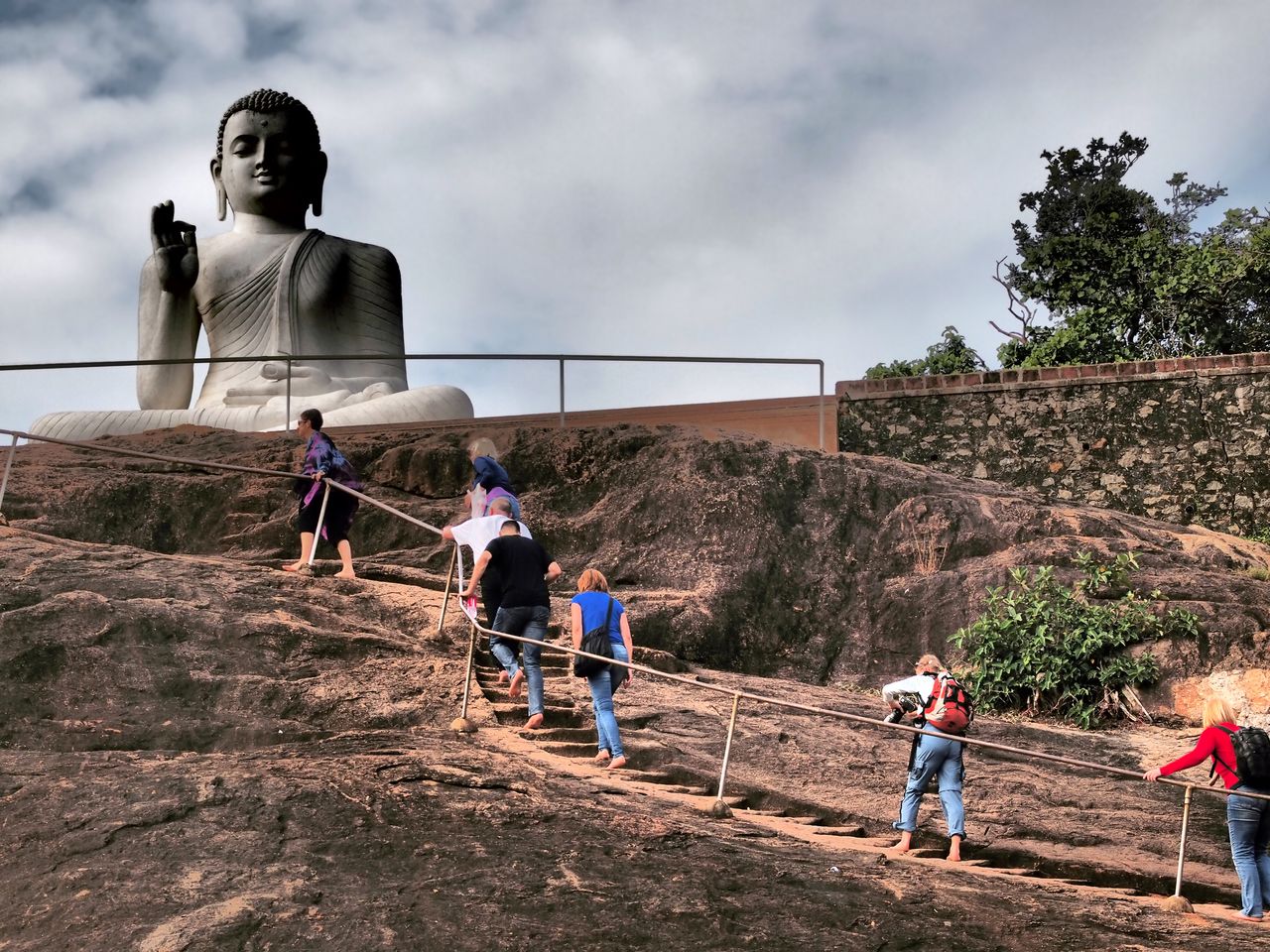
A huge statue of the Buddha at Mihintale, a mountain peak near ancient Anuradhapura. It is an important pilgrimage site with various religious monuments and can be reached by sets of a large number of stone steps © Davor Lovinic
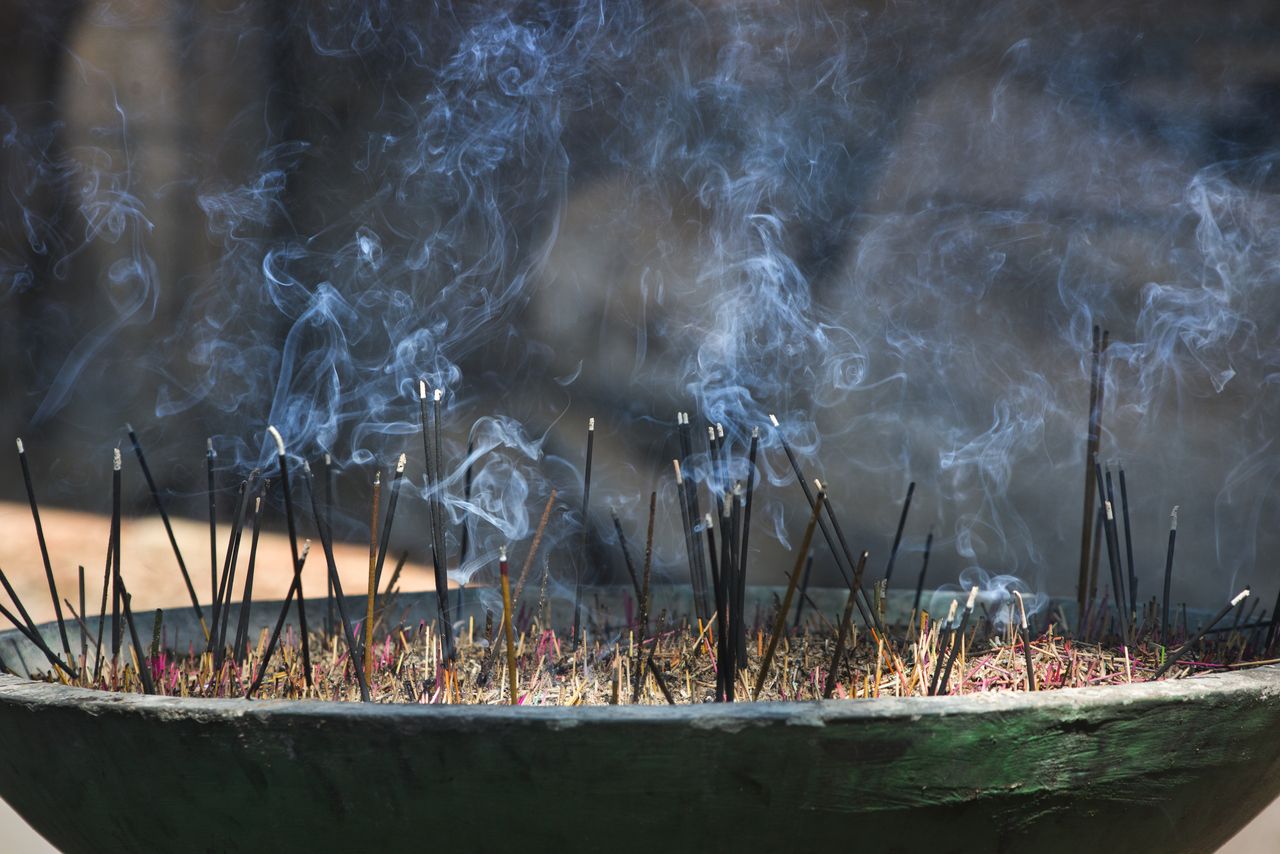
Burning incense as offerings to the Buddha at a religious site in Anuradhapura, Sri Lanka © Quickshooting

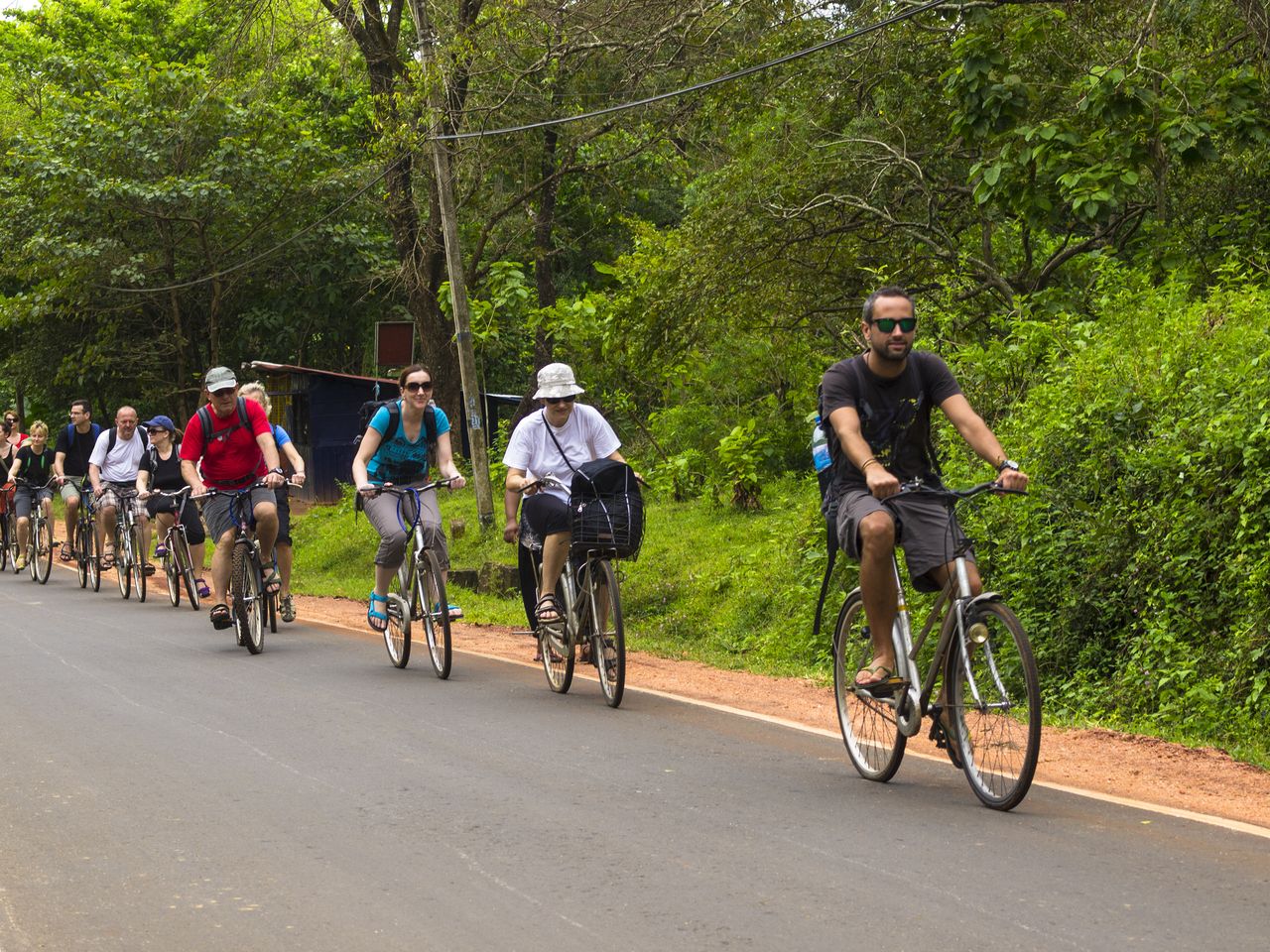
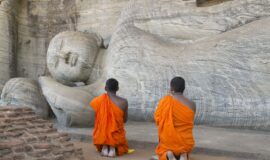
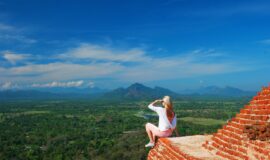
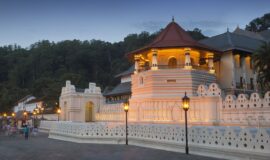
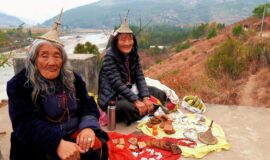
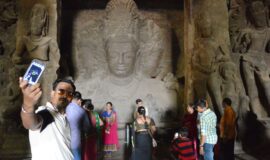
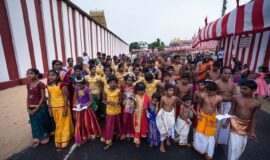
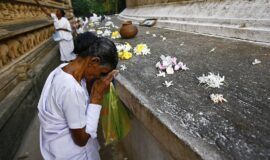
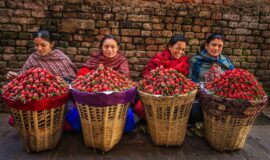
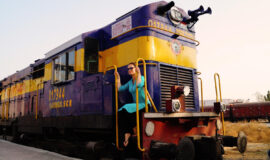

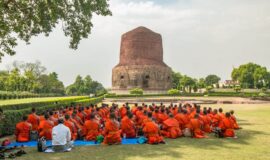
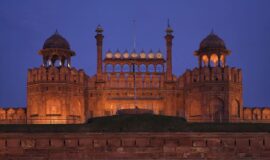
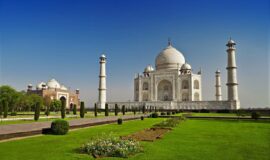
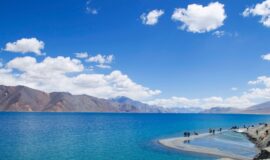
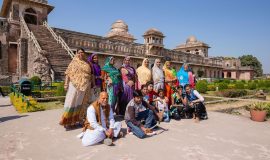
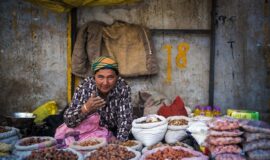
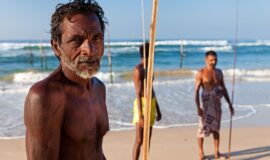
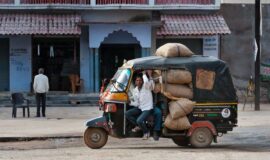
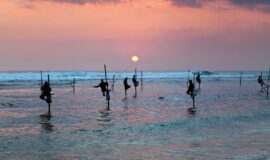
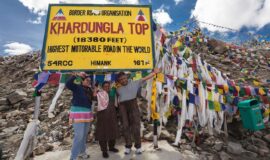
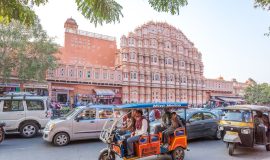
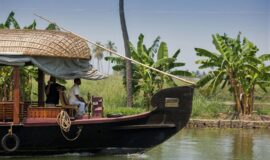
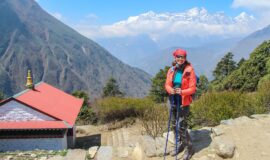
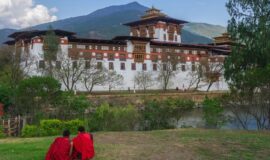
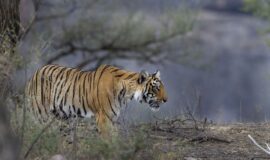
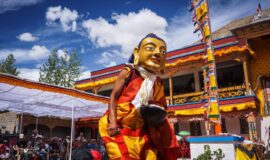
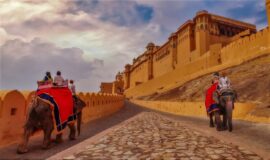
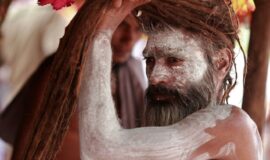

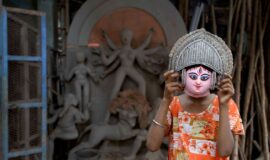
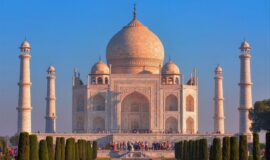
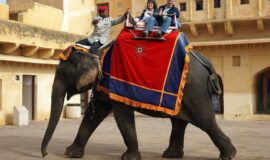
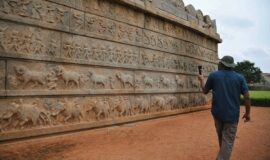
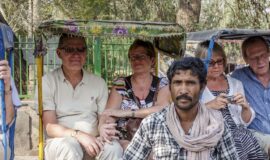
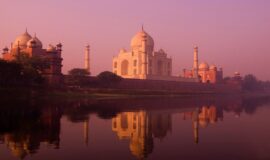
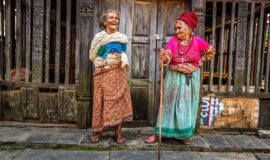
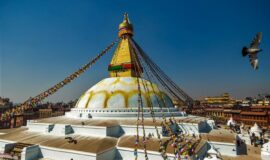
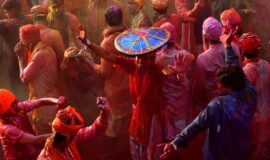
![Golden Triangle Tour with Goa [Culture + Beach Vacation] (12 days) Golden Triangle Tour with Goa [Culture + Beach Vacation] (12 days)](https://www.vacationindia.com/wp-content/uploads/2022/06/golden-triangle-tour-with-beach-vacation-270x160.jpg)
